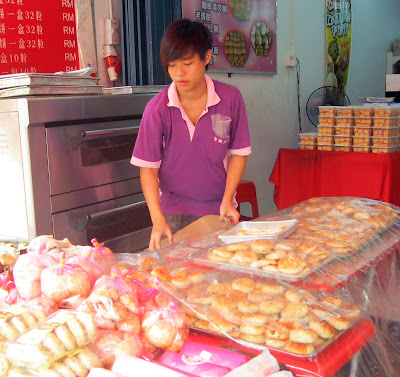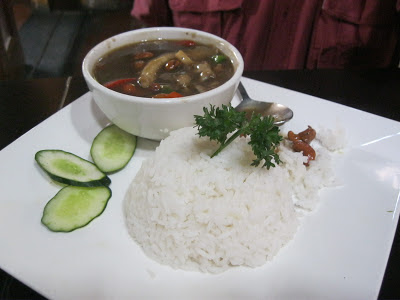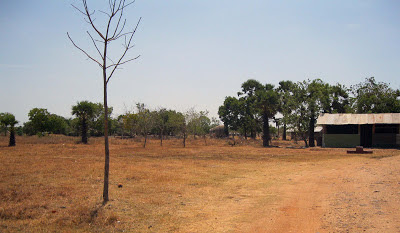For the past five years or so Kuala Lumpur has been our hub for our travel to Sri Lanka and other places in Asia. It is an ever changing, vibrant city and, despite our too-many-to-remember- how-many visits, each arrival is a new adventure of visiting historic and national sites, people watching, eating and shopping. This time, however, we decided to instead spend a few days in Melaka and on arrival at the LCCT we boarded a Transnasional bus for the ninety minute ride south.
The very name "Melaka" evokes memories of books I found in my grandparent's bookshelf when I was about eleven years old. The stories of daring pirates racing for their home base, Malay royalty, adventures in jungles and swamps enthralled and delighted me as I curled up in a chair, oblivious to everything around me. I now wish I had asked to whom the books had once belonged. There were also several on the smuggling theme so someone, maybe my father, had a hankering for a dangerous and different life!
It was just getting dark as the bus left the terminal and we were tired after a long day's travel so we relaxed and slept a little until bright lights indicated that we were nearing the city. A short taxi ride later and we were outside our hotel, Jonkers. This is one of the old hotels right in the centre of the old part of the city and we were very warmly welcomed and soon had our bags lugged up a flight of stairs for us. As we were very hungry I asked about eating options and we were promptly escorted over the road to the last restaurant still open at that late hour. This helpfulness by all hotel staff was to continue for our entire stay and we were greeted by name every time we entered the hotel lobby. Yes! We'll stay there again!
 |
| Jonker Boutique Hotel |
In contrast with Kuala Lumpur, Melaka at night, mid week, was very quiet with all businesses, except for the restaurant closed. As we sat down the waitress came and also sat down with us to have a chat and talk about the various dishes on offer. We chose a fish dish with rice which went down very well, and after another relaxed chat with the waitress we were wished a "good night". This, we thought, was a very pleasant start to our Melaka stay.
 |
| Jonker Street, Melaka |
Despite our late arrival we were awake early next morning and bypassed the Hotel cafe in search of a Melakan breakfast. On one previous visit to Kuala Lumpur we had eaten a fish dish that was described as being a Nyonya dish and I later read that this cooking style was a feature of Melakan cuisine. Nyonya - non - ya - is the fusion of Chinese and Malay cuisines and is delightfully spicy. The name, Nyonya, means "wife" in Chinese-Malay language mix. Our friendly waitress the previous night told is that meat and fish and even vegetables are marinated for some time before cooking and that a shrimp paste is used to bring out the flavours of fish and make the meat sweet. Coconut milk is another feature of this cuisine.
Although it was already 9am when we left the hotel we had to walk some distance down Jonker Walk before we found a restaurant that was just opening and we were the first customers of the day. We knew immediately what we wanted - the famous Hoe Kee Chicken Rice Balls!
 |
| Breakfast at Famosa Restoran |
These famous Chicken Rice Balls are chicken rice shaped into golf sizes balls, steamed and served in soup. We decided to try the Fish Balls as well. Very sweet and tasty they were, too.
 |
| Hoe Kee Chicken Balls and Fish Balls |
When we visit a place we always eat the local food in preference to touristy European food. Melaka proved to be an exciting place for our taste buds! From soups, curries, cakes and desserts we had to make choices and that was not easy.
 |
| Bakery on Jonker Walk |
The goodies on these tables at the front of this bakery were so tempting that I was a regular customer with their coconut buns my favourite. I even carried some to eat on the plane that night but ate them instead before we even embarked! Every item contained sugar, even the savoury curry buns so not good for diabetics, sadly.
 |
| Eleven Bar and Bistro |
One night we had a Portuguese meal at Eleven. This establishment has about four houses with a bar and bistro and can be found in a side street off Jonker Walk in a street known as the Hainan Food Street. It's open only in the evenings, unfortunately.
 |
| Eleven Restaurant Menu |
The menu is very comprehensive with so many dishes appealing.
 |
| Curried Prawns |
We eat a lot of prawns at home but this dish was the tastiest ever and the prawns gigantic. Very juicy and sweet.
 |
| Chicken |
Our second choice was this attractively presented chicken, the curry flavours quite sweet and delicate, served with steamed rice.
 |
| Lunch at Grenedier Resturant |
 |
| Nyonya Pineapple Tarts |
I'll have to try the Nyonya Pineapple tarts next time as the restaurant was closed while we were there.
Share Happiness, though !



















































